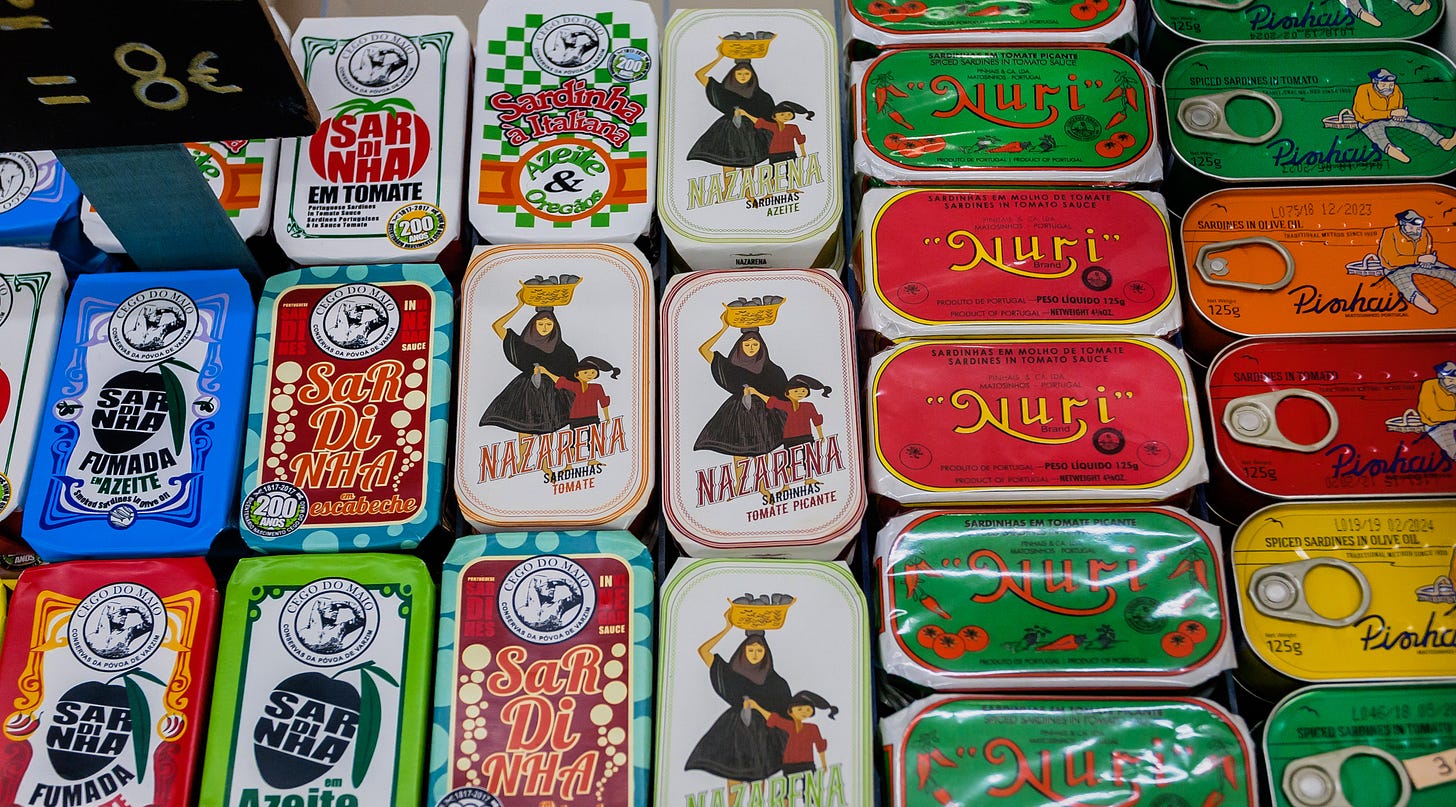If you haven’t become a paid Smart Mouth subscriber yet, please consider it. The money goes straight to paying freelancers a good rate - much better than most publications. And if not that, click on the heart icon above so I know you’re reading! Please enjoy the article below by Melissa Haun.
The Origins of Portugal’s Iconic Foods
By Melissa Haun
In this seaside country of sailors, Catholics and conquerors, everything you eat is intertwined with the past. Here are five essential Portuguese treats, plus the strange stories behind them.
Pastéis de Nata: You can’t visit Portugal without being bombarded by pastéis de nata: the country’s pastry par excellence. They were originally invented by the monks at Lisbon’s Jerónimos Monastery, who used egg whites to starch their clothing. The resulting excess of egg yolks led to the development of this yolk-heavy custard tart. After the Liberal Revolution of 1820, the monks started peddling pastries to the public, and eventually sold the secret recipe to a nearby sugar refinery. It became the iconic Pastéis de Belém bakery, where you can still try the classic version.
Alheira: Smoked and cured meats are a staple across the Iberian Peninsula, but Portugal has its own unique take. Enter alheira: a sausage traditionally made of poultry or game meat, garlic and bread that’s usually baked in the oven until crispy. Alheira has its origins in the Inquisition, when authorities forced Portuguese Jews to either flee or convert to Catholicism. Some chose to simply pretend they’d converted – and one way they did so was by hanging alheira in their houses. Since it resembled chouriço (pork sausage) from afar, it made it look like they’d become good pork-eating Catholics.
Conservas: Portuguese canned fish goes far beyond tuna. The country’s canning industry thrived during the two World Wars, when soldiers across Europe were in need of cheap, nutritious and shelf-stable rations. Afterward, conservas came to be viewed as a lower-class food. But in the past couple of decades, people have started to reclaim canned seafood and transform it into a proud symbol of Portugal’s past. Today you can get gourmet sardines, tuna, codfish, octopus, mackerel and more in carefully designed packages that are veritable works of art.
Bacalhau: Bacalhau (salt cod) is known as Portugal’s national dish, despite the fact that 100% of it is imported. The Portuguese like to say that there are 365 ways to prepare it – one for each day of the year. Its origins go back to the Age of Discovery, when Portuguese navigators sailed around the world to conquer new colonies. They found this fish around Greenland and Newfoundland, and preserved it with salt so that it wouldn’t go bad during long sea journeys.
Ginjinha: Ginjinha isn’t technically a food, but its origin story earns it a place on this list. A few hundred years ago, a Lisbon friar left some ginja (sour cherries) sitting in aguardente (brandy). He then had the bright idea to add water, sugar and cinnamon to create a super strong and sweet liqueur. For decades it was considered to be medicine and even prescribed to children. Some of Lisbon’s oldest ginjinha bars still open early for the elderly locals, who like to start every day with a shot-glass sized dose.
More Food Reading:
Well, both NRAs are evil.
Fun info on gelatins and aspics of history!

If you liked the newsletter today, please forward it to someone who’d enjoy it, and tap the heart icon above or below, which will help me reach more readers. I appreciate your help, y’all!
This newsletter is edited by Katherine Spiers, host of the podcast Smart Mouth.
A TableCakes Production.
Want to contribute? Here are the submission guidelines.









